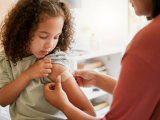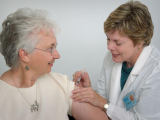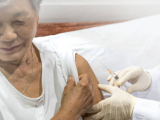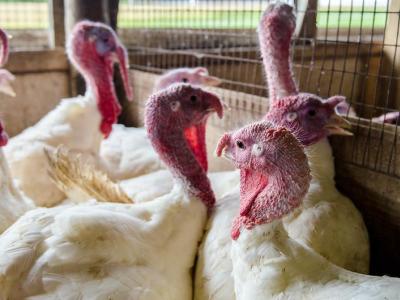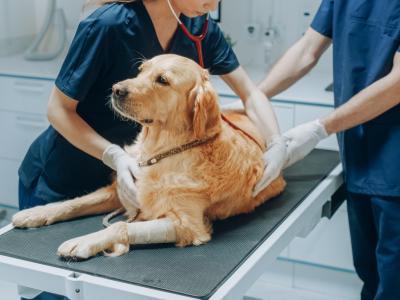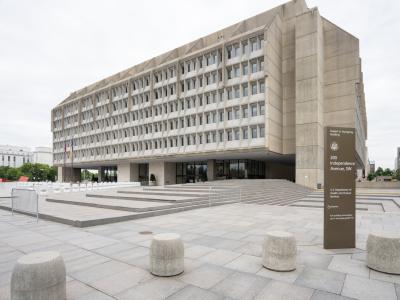Jun 15, 2010 (CIDRAP News) – A team of US researchers reported today that the current pandemic H1N1 influenza vaccine protects mice and may protect humans against the 1918 pandemic virus, a finding that should reduce concern about the potential for an accidental or intentional release of that strain.
The report by investigators from Mount Sinai School of Medicine and St. Louis University fits with previous studies showing a close relationship between the 2009 pandemic virus and the 1918 virus. It also seems to fit with the evidence that older people have some protection against the 2009 H1N1 virus because of exposure to pre-1957 H1N1 viruses, which were more closely related to the 1918 strain than were recent seasonal H1N1 viruses.
"The new vaccine works against the old virus because the 1918 and the 2009 strains of H1N1 influenza share features that allow vaccine-generated antibodies to recognize both viruses," the National Institute of Allergy and Infectious Diseases (NIAID), which funded the study, said in a statement.
The study, led by Adolfo Garcia-Sastre of Mount Sinai as senior author, was published online today by Nature Communications.
The investigators dosed groups of mice with normally lethal amounts of the 1918 virus 14 or 28 days after giving them either the 2009 H1N1 vaccine, an H3N2 flu vaccine, or no vaccine, according to the NIAID. All the H1N1-vaccinated mice survived, while all the others died.
Still other mice were given a vaccine against a 2007 seasonal strain of H1N1 virus before being exposed to the 1918 virus. Eighty percent of those mice survived the challenge, the NIAID reported.
The researchers also say they found that serum from humans who had received the 2009 H1N1 vaccine generated antibodies against the 1918 virus. In a further test, the researchers injected mice with samples of the human serum. When the mice were later dosed with the 1918 virus, they survived, suggesting that the 2009 H1N1 antibodies in the human serum protected them.
The researchers write that further studies in other animals, such as ferrets and monkeys, are needed to confirm the results and suggest whether vaccination will prevent transmission of the 1918 virus.
"The spread of the 2009 H1N1 influenza virus in the population worldwide, in addition to the large number of individuals already vaccinated, suggests that a large proportion of the population now have cross-protective antibodies against the 1918 virus, considerably reducing the concerns of the consequences of an unwanted or malicious release of this lethal strain of influenza virus," their report states.
The scientists add that their finding is likely to affect the development of future biosecurity policies for working with the 1918 virus, since the wide availability of the pandemic vaccine adds an extra layer of safety for scientists handling the virus. The 1918 virus was reconstructed from patient samples from a US Army pathology library and from the body of a 1918 flu victim in Alaska.
The authors also comment that the partial protection in mice that received a 2007 H1N1 vaccine matches findings from some previous studies, though the mechanism for this protection is unclear. "This partial cross-protection provides additional indirect evidence that humans vaccinated against or exposed to previous seasonal H1N1 strains might have variable levels of cross-protective immunity against the 1918 virus," they write.
Previous studies dealing with the antigenic relatedness of the 2009 and 1918 H1N1 viruses include one published in January in which mice vaccinated against the 1918 virus were fully protected from the 2009 strain and partially protected from more recent H1N1 viruses. In addition, in a study released in April, scientists reported finding a matching epitope, or region, in the hemagglutinin proteins of the 2009 and 1918 viruses.
Medina RA, Manicassamy B, Stertz S, et al. Pandemic 2009 H1N1 vaccine protects against 1918 Spanish influenza virus. Nature Communications 2010 (Jun 15 online publication) [Full text]
See also:
Jun 15 NIAID statement
http://www.niaid.nih.gov/news/newsreleases/2010/Pages/2009H1N1VaxProtect1918.aspx
